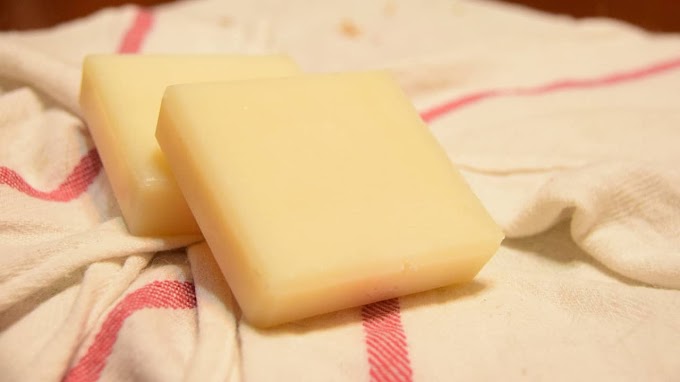 |
| Dusty Miller |
It's hard to not like Dusty Miller. It just sounds so cool, like it's the title of a detective movie.
Dusty Miller does an excellent job of bringing contrast to your garden. With its silvery leaves, it's the go-to plant with any color scheme. It's a low maintenance plant that will bring a whole new dimension to your flower garden.
Dusty Miller Overview
| Scientific Name: | Jacobaea Maritima |
| Common Name: | Dusty Miller, Silver Ragwort |
| Origin: | Mediterranean region |
| Height: | Up to 3 feet |
| Sun Exposure: | Full sun |
| Soil Type: | Well-drained and average |
| Soil pH: | 5.5 to 6 |
| Water: | Mild-average |
| Bloom Time: | Summer |
| Fertilizer: | General every 2-4 weeks |
| Zones: | 7 to 10 |
Varieties of Dusty Miller
The real dusty miller is the Jacobaea Maritima (formerly Senecio cineraria), and within this plant species, there are numerous varieties from which to choose. Breeders around the world have been cultivating several varieties of dusty miller plants, including the following.
Cirrus
This variety of dusty miller plant has a less delicate appearance than many of its relatives, with less serration at the edge of the foliage, making it a bolder and more defined appearance.
The silver-white foliage of this strain has the soft felt texture, making it an ideal companion plant for contrasting flowers and foliage.
This variety of dusty miller has a lower growth than many others, reaching heights of only 1 foot in height. It spreads easily, making it especially useful for ground cover, filling gaps in flower beds and edges.
It also works well in hanging containers and baskets, bringing shocks of unusual foliage color to different areas of the garden. The "Cirrus" variety has an expected shelf life of around ten years if properly cared for.
Silver Lace
This is a delicate variety of powdery grinders, which probably appears as the most elegant of all the powdery grinders varieties. It has delicate serrated leaves that are similar to those of ferns, and give it a beautiful lace look.
This plant grows to around 8 inches tall, making it suitable for growing in containers as well as on edges and beds. It not only forms a compact size but also a compact shape, which naturally grows in a spherical shape.
This plant is deer resistant and enjoys dry soil. Appreciate regular fertilization with a good amount of nitrogen to aid in lush leaf growth.
 |
| Dusty Miller |
The silver foliage of this strain is delicately cut to give it an elegant appeal. It has thick stems that grow to around 18 inches tall, reaching maturity at just four months old.
This is an incredibly fast-growing plant that responds well to pruning.
Reduce the height of the plant to encourage further downward growth, as this will result in a lush, bushy plant.
This plant is cold hardy and can survive low temperatures well.
It is drought tolerant and works well when planted with other plants that have low water needs.
This plant works particularly well on cut flower bouquets, filling flower displays with unusual foliage.
Silver Filigree/Silver Cascade
This award-winning variety of dusty miller plant has a compact growth habit, reaches heights of between 4 and 8 inches, but extends up to 14 inches in width.
It is a good ground cover but is most commonly used in containers and edges. The silver foliage of the plant is deeply serrated, with a soft, woolly texture.
Ramparts
Dusty grinding plants are generally low maintenance and easy care plants, but this variety is the easiest to care for. As long as it is planted in a position of full sun and it comes to occasional watering, then it should thrive without any additional attention.
 |
| Dusty Miller |
How to grow Dusty Miller
Dusty Miller is a plant that can surprise you. It sometimes survives the winters in the zones colder than it is hardy in. People have reportedly had success with the plant in zone 5 or even zone 4 lands.
Do you want another surprise? Sometimes yellow flowers make an appearance in the second growing season of dusty miller. It's not known as a blooming plant, and not all plants will bloom the yellow flowers, they, however, increase the beauty of the mature plants. Nobody minds added bonuses!
Soil
It's a versatile plant that is adaptive to many soils. Well-drained soil is key to prevent root rots that might plague dusty millers. A little spacing between the plants won't hurt either.
Light
Dusty Millers love the sun, can't get enough of it. They look dull and not silvery if it doesn't get enough sunlight. A little shade won't hurt if you live somewhere with extremely hot temperatures.
Water
Watering them once a week is fine in mild temperatures. Warmer temperatures (90 and above) may require watering twice a week. A layer of organic mulch will make plants even less dependant on irrigation.
Fertilizer
Fertilizers are a must in most cases as most soils are lacking in necessary nutrients for dusty millers. If you use a water-soluble fertilizer, application every two weeks should be enough.
For the slow-release fertilizers, once each growing season should do.
Pruning
You probably won't need any pruning. These plants are very specific in their shape and size.
If you want them to look extra pretty for you, shear off the flowers as they appear.
The flowers suck the nutrients from the plant, making it lanky and less bushy.
Propagation of Dusty Miller
You have plenty of options here: grow from seed, or stem cuttings, or try root division.
Sow seeds around 10 weeks before the last expected frost. Sow them on top of the soil and let the light shine on it. You should be able to see sprouts in 10-15 days.
Final words
Dusty Miller is one of the magnificent varieties of plants that adds silvery hue to your decor. Whether you are looking for your front garden, backyard, or for your bedside, Dusty Miller is bound to enchant you at all times.
Hope this article was helpful to you. Please feel free to leave a comment below if you need further information regarding Dusty Miller or any other plant, I will be happy to revert.




![How The Healing Touch of Bageshwar Dham Sarkar Cured Lakhmi's Backpain Miraculously! [Video Included]](https://blogger.googleusercontent.com/img/b/R29vZ2xl/AVvXsEg01rHPfpiVWhtGNBen7_nOt1E7bW9Sh2rUs0jqRwBxoXp0m6igwodfQunEnIEbvWH2c_U0raE_pETCAjU73Bhw-85UdPBSay6b-hcMVsFHu_dTYduJa38tZFyS4ibB4m4mQBq-1wZOWYxACIBbpq76BNvXH8uEuLjWvdjmGSVTBQJK0s8i4bKhUWPA1pU/w680/baba%20bageshwar%20dham%2028%20june%20(1).jpg)



.png)